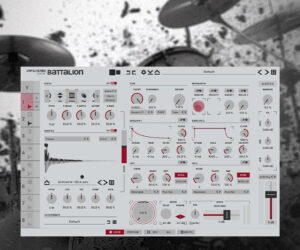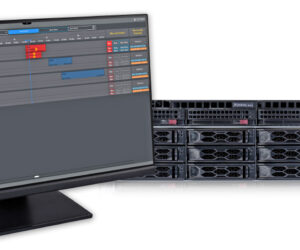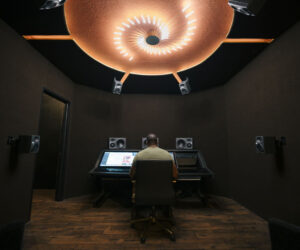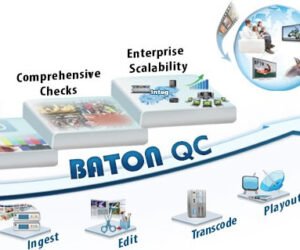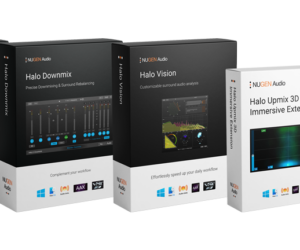Recording engineer and producer Michael Bishop won his 10th GRAMMY in the category Best Engineered Album, Classical; a project recorded with ribbon microphones from Royer Labs.
The award was issued to him at the 57th annual award show for his engineering, mixing, and mastering work on the ASO Media release Vaughan Williams: Dona nobis pacem, Symphony No. 4, The Lark Ascending, which features Robert Spano, Norman Mackenzie, and the Atlanta Symphony Orchestra and Chorus.
Shortly after on March 4th, he could be found in Dallas, TX engineering the Cancer Blows benefit concert recording for PBS at the Morton F. Meyerson Symphony Center.
In each case, the microphones that contributed to Bishop’s success on these two projects were drawn from the catalog of Burbank, CA-based Royer Labs.
As the co-founding member and recording engineer / producer for Five/Four Productions of Shaker Heights, OH, Bishop’s resume resembles a Who’s Who of music and entertainment.
Bishop’s recording credits include projects with Dizzy Gillespie, Wild Cherry, Hiromi Uehara, the Stanley Clarke Trio, Bonnie Raitt, The James Gang, Manhattan Transfer, Robert Spano and the Atlanta Symphony Orchestra and Chorus, plus Franz Welzer-Möst and The Cleveland Orchestra to name but a few. Michael has also recorded major film soundtracks including the MGM musical The Fantasticks and the Oscar-winning film Reds.
Presently, Bishop’s Royer Labs microphone arsenal includes an SF-24 Stereo Active Ribbon microphone, four SF-2 Mono Ribbon microphones, an SF-12 Stereo Ribbon mic, an R-122V Vacuum Tube Ribbon mic, four R-121 Mono Ribbon mics, and four R-101 Mono Ribbon microphones.
“For the Vaughn Williams project with the Atlanta Symphony Orchestra and Chorus, I used the Royer SF-24 as the main surround pickup of the orchestra and four SF-2s on the chorus,” Bishop explains.
“For the Cancer Blows project,” he continues, “I deployed an SF-24 as the main orchestra surround pickup while the SF-12 was used for the orchestra’s wind section as well as the overall big band pickup. I used the SF-2 for drum kit, the orchestra bass section, as well as the upright bass of the rhythm section. The R-122V was used as the primary downstage solo microphone while the R-121s were used as additional downstage solo mics and for the big band trumpet section. I also used the R-101 on the big band trumpet section.”
“I’ve used the SF-24 stereo ribbon mic as the main surround orchestra pickup on most of my orchestral recording sessions,” Bishop reports, “including the two recordings that had consecutively won the “Best Surround Album” GRAMMY. Accurate imaging, the ability to beautifully capture the ‘space’ around the orchestra, an un-colored sound, and perfect integration into the overall mix are among the attributes I can point to as to why I always rely on the SF-24 on my sessions. I also incorporate the pickup of the SF-24 to a degree into the stereo mix to add extra size and depth to the overall stereo image of the orchestra.”
The Royer SF-2 is another of Bishop’s favorites. “The SF2s have been the perfect chorus pickup microphone for me, especially when working with the challenging stage acoustics of the Atlanta Symphony Hall, where the physical layout of the orchestra and chorus can be quite difficult from a miking perspective,” he reports.
“With careful placement of the SF-2 ribbon mics, I can effectively use the natural -90dB null points of the mics to minimize the leakage of the percussion and brass instruments into the chorus microphones, yet maintain a proper distance with the chorus pickup. The SF-2s also interact far better than condenser mics would with the challenge presented by a strong soprano and alto section. A strong soprano section is capable of producing intermodulation distortion in the air around them. This is a natural phenomenon that can present some difficulty to condenser microphones, but a good ribbon microphone easily handles such a signal without adding any edginess to the sound.”
With the high profile projects characteristic of Bishop’s work, quality customer and technical support is crucial. Here too, he gives Royer Labs high marks, “The customer / technical support team at Royer Labs has been a lifeline for me in my work. I’ve been able to depend upon their assistance at a moment’s notice and they’ve always come through. I’ve found the Royer team to be among the best in the biz.”
Before turning his attention back to the business of the day, Bishop offered these final thoughts, “I’m fortunate to have a good set of tools available to me in my work and the Royer mics are there every time. The Royer ribbon mics play an absolutely essential role in all of my sessions. When I think of the sound I want to present, the Royer mics are a key ingredient.”









